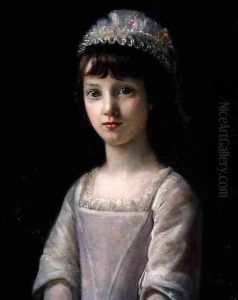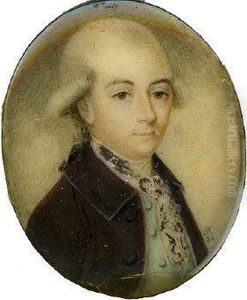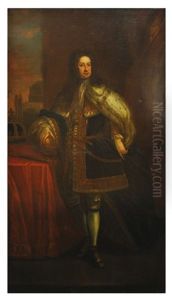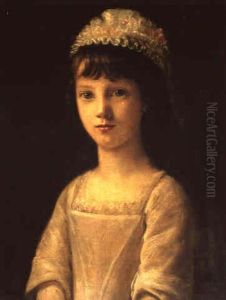John Camillus Hone Paintings
John Camillus Hone was an Irish painter known primarily for his portrait work. Born in Dublin in 1759, he grew up in an era where Ireland was still under British rule, which influenced the cultural and artistic landscape of the country. Hone came from an artistic family; his father was Nathaniel Hone the Elder, a renowned painter who was a founding member of the Royal Academy in London. This artistic environment undoubtedly had a significant impact on John Camillus Hone's career and development as an artist.
Hone’s early life and education were centered around art, and he likely received his initial training from his father. Although his early career is not as well documented as that of some of his contemporaries, it is known that he established himself as a portrait painter in Dublin. He worked at a time when portraiture was the most sought-after genre in Irish art, catering to the demands of the wealthy and the aristocracy who wanted to immortalize their likenesses and their status.
Despite his skills as a portraitist, John Camillus Hone did not achieve the same level of fame as his father. However, he enjoyed a respectable career and contributed to the Irish art scene during his lifetime. His works were characterized by a keen attention to detail and a strong grasp of the techniques of the time. Unfortunately, because John Camillus Hone was overshadowed by his father's legacy, and due to the less-documented nature of his career, specific details about his works and their impact are limited.
John Camillus Hone continued to work and live in Dublin throughout his life. He passed away in 1836. While he may not have gained the same historical recognition as his father or other artists of the period, his contributions to Irish art during the 18th and early 19th centuries were part of the rich tapestry of cultural development in Ireland. Today, his works, along with those of his contemporaries, offer insights into the styles and societal interests of the time.



